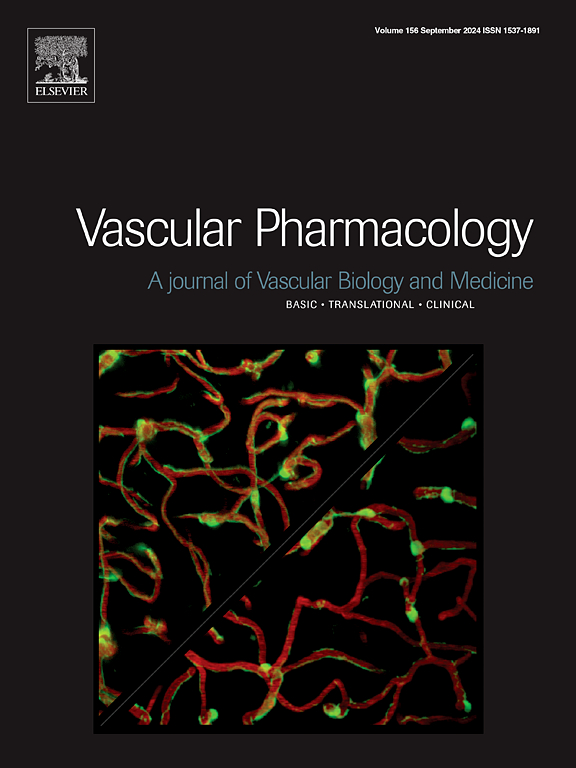TRPV4 in Cerebral Small Vessel Disease: A key interacting partner
IF 3.5
3区 医学
Q2 PHARMACOLOGY & PHARMACY
引用次数: 0
Abstract
Cerebral small vessel disease (cSVD) is a major cause of vascular cognitive impairment and dementia. The underlying disease mechanisms are centered around the dysfunction of the neurovascular unit and include an impairment of the blood-brain barrier (BBB) permeability, a decreased cerebrovascular reactivity and cerebral hypoperfusion. The cells composing the neurovascular unit express a wide variety of mechanosensitive ion channels that are relevant for these processes. Recent research has increasingly focused on the mechanobiology of cerebral microvessels with recent evidence pointing towards a significant role of transient receptor potential vanilloid 4 (TRPV4). This Ca2+-permeable channel regulates key physiological functions, including vascular tone, angiogenesis, BBB integrity and neuroinflammation. Beyond its physiological role, recent evidence implicates TRPV4 in pathological processes such as cerebrovascular remodelling, impaired cerebrovascular reactivity, and BBB dysfunction. In this review, we explore the multiple roles of TRPV4 within the neurovascular unit, its interactions with key molecular partners, and we discuss evidence for its potential contribution to cSVD.
脑小血管疾病中的 TRPV4:一个关键的相互作用伙伴
脑血管病(cSVD)是血管性认知障碍和痴呆的主要原因。潜在的疾病机制以神经血管单元功能障碍为中心,包括血脑屏障(BBB)渗透性损害、脑血管反应性降低和脑灌注不足。构成神经血管单元的细胞表达与这些过程相关的各种机械敏感离子通道。最近的研究越来越关注脑微血管的机械生物学,最近的证据表明瞬时受体电位香草蛋白4 (TRPV4)在脑微血管中的重要作用。这种Ca2+可渗透通道调节关键的生理功能,包括血管张力、血管生成、血脑屏障完整性和神经炎症。除了其生理作用外,最近的证据表明,TRPV4还参与了脑血管重塑、脑血管反应性受损和血脑屏障功能障碍等病理过程。在这篇综述中,我们探讨了TRPV4在神经血管单元中的多种作用,它与关键分子伴侣的相互作用,并讨论了它对cSVD潜在贡献的证据。
本文章由计算机程序翻译,如有差异,请以英文原文为准。
求助全文
约1分钟内获得全文
求助全文
来源期刊

Vascular pharmacology
医学-药学
CiteScore
6.60
自引率
2.50%
发文量
153
审稿时长
31 days
期刊介绍:
Vascular Pharmacology publishes papers, which contains results of all aspects of biology and pharmacology of the vascular system.
Papers are encouraged in basic, translational and clinical aspects of Vascular Biology and Pharmacology, utilizing approaches ranging from molecular biology to integrative physiology. All papers are in English.
The Journal publishes review articles which include vascular aspects of thrombosis, inflammation, cell signalling, atherosclerosis, and lipid metabolism.
 求助内容:
求助内容: 应助结果提醒方式:
应助结果提醒方式:


